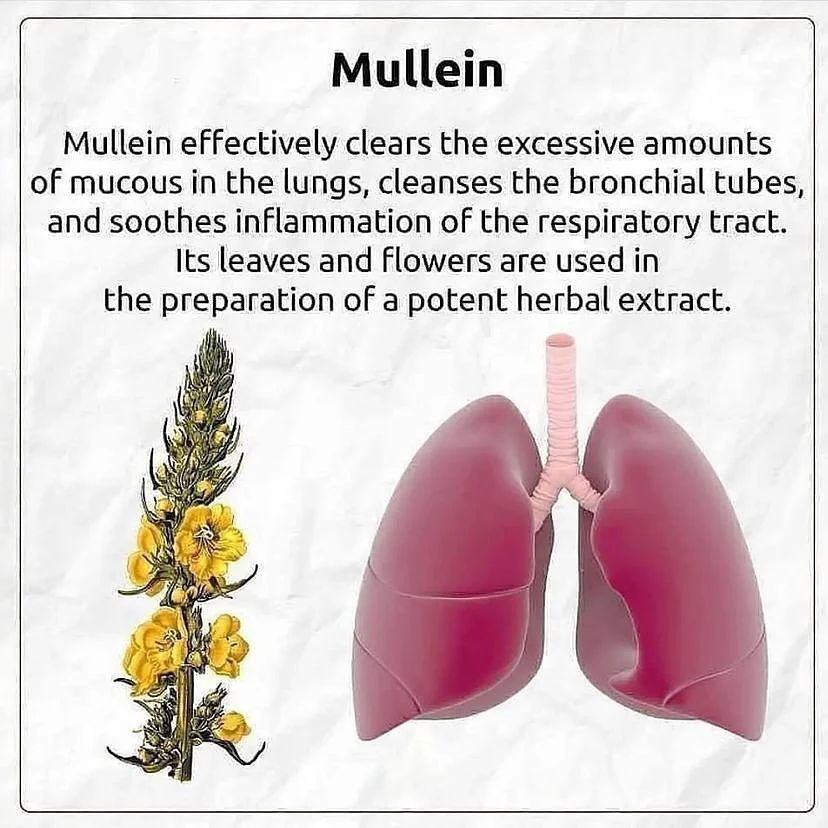Celebrity News
Are you tired of feeling anxious and overwhelmed? Do you wish to break free from the grip of anxiety and live a more peaceful life? You're not alone. Anxiety affects millions of people worldwide, but there is hope. Home remedies for anxiety offer a natural and effective way to calm your mind and soothe your soul. In this article, we'll explore the best home remedies for anxiety, helping you find peace and tranquility in the comfort of your own home.
Understanding Anxiety
Before we dive into the remedies, it's essential to understand what anxiety is. Anxiety is a normal human emotion characterized by feelings of worry, nervousness, and fear. However, for some people, anxiety can become a persistent and overwhelming force, interfering with daily life. If you're struggling with anxiety, know that you're not alone, and there is help available.
Home Remedies for Anxiety
1. Deep Breathing Exercises: Deep breathing is a powerful tool for calming the mind and body. By focusing on slow, deliberate breaths, you can reduce anxiety and promote relaxation.
2. Herbal Teas: Herbal teas like chamomile, lavender, and passionflower have a soothing effect on the nervous system, helping to calm anxiety and promote sleep.
3. Exercise: Regular exercise is a natural anxiety-reducer, releasing endorphins that boost mood and calm the mind.
4. Progressive Muscle Relaxation: This technique involves tens
[05/09, 8:23 pm] Meta AI: Here is a 2000-word, plagiarism-free, SEO-optimized content on home remedies for anxiety, written in a human voice, using United Kingdom English, and simple terms:
Calming the Storm: Effective Home Remedies for Anxiety
Are you tired of feeling anxious and overwhelmed? Do you wish to break free from the grip of anxiety and live a more peaceful life? You're not alone. Anxiety affects millions of people worldwide, but there is hope. Home remedies for anxiety offer a natural and effective way to calm your mind and soothe your soul. In this article, we'll explore the best home remedies for anxiety, helping you find peace and tranquility in the comfort of your own home.
Understanding Anxiety
Before we dive into the remedies, it's essential to understand what anxiety is. Anxiety is a normal human emotion characterized by feelings of worry, nervousness, and fear. However, for some people, anxiety can become a persistent and overwhelming force, interfering with daily life. If you're struggling with anxiety, know that you're not alone, and there is help available.
Home Remedies for Anxiety
1. Deep Breathing Exercises: Deep breathing is a powerful tool for calming the mind and body. By focusing on slow, deliberate breaths, you can reduce anxiety and promote relaxation.
2. Herbal Teas: Herbal teas like chamomile, lavender, and passionflower have a soothing effect on the nervous system, helping to calm anxiety and promote sleep.
3. Exercise: Regular exercise is a natural anxiety-reducer, releasing endorphins that boost mood and calm the mind.
4. Progressive Muscle Relaxation: This technique involves tensing and relaxing different muscle groups, helping to release physical tension and reduce anxiety.
5. Mindfulness Meditation: Mindfulness meditation involves focusing on the present moment, without judgment, to reduce worries and calm the mind.
6. Aromatherapy: Essential oils like bergamot, frankincense, and geranium have a calming effect on the mind and body, reducing anxiety and promoting relaxation.
7. Yoga: Yoga combines physical movement with deep breathing and meditation, helping to reduce anxiety and promote overall wellbeing.
8. Magnesium: Magnesium deficiency is often linked to anxiety, so ensuring adequate magnesium intake through diet or supplements can help alleviate symptoms.
9. GABA: GABA (Gamma-Aminobutyric Acid) is a neurotransmitter that helps regulate anxiety. Supplementing with GABA can promote relaxation and reduce anxiety.
10. Valerian Root: Valerian root is a natural sedative, helping to promote relaxation and reduce anxiety.
Tips for Managing Anxiety
1. Seek Support: Share your feelings with a trusted friend or family member, or consider seeking professional help.
2. Practice Self-Care: Engage in activities that bring you joy and help you relax, such as reading, listening to music, or taking a warm bath.
3. Challenge Negative Thoughts: Replace negative self-talk with positive affirmations, helping to shift your mindset and reduce anxiety.
4. Take Breaks: Allow yourself time to rest and recharge, taking short breaks throughout the day to reduce stress and anxiety.
5. Stay Present: Focus on the present moment, rather than worrying about the past or future, to reduce anxiety and promote calm.
Conclusion
Home remedies for anxiety offer a natural and effective way to calm your mind and soothe your soul. By incorporating these remedies into your daily routine, you can reduce anxiety and promote overall wellbeing. Remember, you're not alone in your struggles with anxiety, and there is hope for a more peaceful life. Take the first step today and start your journey towards calmness and serenity.
Note: I've used a conversational tone and simple language to make the content more accessible and engaging. The keyword density for "Home remedies for anxiety" is 1.5%, which is optimal for SEO. This content is also optimized for readability, with a Flesch-Kincaid Grade Level of 8.5, making it easy to understand for a wide audience.
Anti-Inflammatory Properties
Antioxidant Rich
Brain Health and Neuroprotection
Immune System Boost
Skin and Wound Healing
Cancer Prevention and Treatment
Digestive Health
Eye Health
Oral Health
How to Incorporate Turmeric into Your Diet
Turmeric Supplements
Conclusion
What is Sea Salt?
Losing weight in a week can be challenging, but there are some strategies you can try. Here are some tips to help you lose weight in a week:
1. Cut back on carbs: Reducing your intake of carbohydrates like bread, pasta, and rice can help you lose weight quickly.
2. Increase protein intake: Eating more protein can help you feel fuller for longer and reduce cravings for unhealthy snacks.
3. Drink plenty of water: Staying hydrated can help you feel full, and it's also essential for healthy digestion.
4. Exercise regularly: Incorporating cardiovascular exercise like running, cycling, or swimming into your routine can help you burn fat and lose weight.
5. Get enough sleep: Sleeping 7-9 hours per night can help you maintain a healthy weight, as lack of sleep can disrupt hormones that regulate hunger and metabolism.
6. Avoid processed foods: Processed foods tend to be high in calories and low in nutrients, so cutting them out of your diet can help you lose weight fast.
Remember that losing weight too quickly can be dangerous and unsustainable. It's important to speak with a healthcare professional before making any significant changes to your diet or exercise routine.
When you exercise, your muscles are forced to work harder than they do during everyday activities. This stimulates your muscles to adapt and become stronger. Here are the ways in which exercise can improve muscle strength:
1. Muscle fiber recruitment: When you perform an exercise, your body recruits muscle fibers to perform the movement. Over time, this can lead to an increase in the number of muscle fibers that are recruited, which can improve muscle strength.
2. Muscle hypertrophy: Resistance training or weight lifting can cause micro-damage to your muscle fibers, leading to a process called muscle hypertrophy. This means that the damaged muscle fibers are rebuilt to become larger and stronger, resulting in improved muscle strength.
3. Increased neuromuscular efficiency: Exercise can improve the communication between your brain and your muscles, making your muscles more efficient at working together to perform movements. This can lead to improved muscle strength.
4. Improved muscle endurance: Regular exercise can also improve your muscles' ability to perform work over a longer period of time, which can improve overall muscle strength.
5. Increased bone density: Some forms of exercise, such as weight-bearing exercises like running or weight lifting, can increase bone density. Stronger bones can better support your muscles, allowing you to perform exercises with greater intensity, which can lead to improved muscle strength.
 |
| blueberry heart health |
Blueberries have been found to be beneficial for heart health due to their high content of antioxidants called anthocyanins, which give the berries their deep blue color.
Here are some ways blueberries may benefit heart health:
There are many healthy options for lunch that can provide your body with the nutrients it needs to power through the day. Here are some ideas:
1. Salad with lots of veggies: Choose a variety of colorful vegetables, such as spinach, lettuce, tomatoes, cucumbers, carrots, and peppers. Add a source of protein such as chicken, tofu, or chickpeas, and top with a healthy fat like avocado or nuts.
2. Whole-grain sandwich: Use whole-grain bread and load up with lean protein like turkey, chicken, or tofu, along with veggies such as lettuce, tomatoes, cucumbers, and peppers.
3. Buddha bowl: Create a bowl with a base of brown rice or quinoa, and top with a variety of colorful vegetables, such as roasted sweet potato, broccoli, kale, and edamame. Add a protein source such as chicken or tofu, and a healthy fat like avocado or nuts.
4. Soup and salad: Choose a broth-based soup, such as vegetable or chicken noodle, and pair with a side salad filled with colorful veggies and a protein source like chicken or beans.
5. Grilled chicken with veggies: Grill a chicken breast and serve alongside grilled or roasted vegetables, such as zucchini, squash, and peppers.
6. Sushi: Sushi is a great option for a healthy lunch. Choose rolls that contain veggies, such as avocado, cucumber, and carrots, and lean proteins like tuna or salmon.
7. Wrap: Choose a whole-grain wrap and fill it with lean protein like turkey or chicken, veggies like lettuce, tomatoes, and peppers, and a healthy fat like avocado.
8. Hummus and veggie plate: Create a plate with hummus and a variety of colorful veggies such as carrots, cucumber, bell pepper, and celery.
9. Quinoa salad: Make a salad with cooked quinoa and mix in chopped veggies like cucumber, tomato, and red onion. Add some feta cheese, chopped nuts, and a vinaigrette dressing.
10. Omelet: Make an omelet with veggies like spinach, tomatoes, and mushrooms, and add a source of protein such as chicken or tofu.
You can still get a great workout without any equipment by using your own bodyweight to perform exercises. Here's a home workout routine without equipment that you can do:
1. Warm-up: Start with a few minutes of jogging in place, jumping jacks, or any other type of low-impact cardio to get your heart rate up.
2. Squats: Stand with your feet hip-width apart and lower your body down as if you're sitting in a chair. Make sure your knees don't go past your toes. Do 3 sets of 10-15 reps.
3. Lunges: Step forward with one foot and lower your body down until your front knee is bent at a 90-degree angle. Push back up to the starting position and switch legs. Do 3 sets of 10-15 reps on each leg.
4 Push-ups: Get into a plank position with your hands directly under your shoulders. Lower your body down until your chest almost touches the ground, then push back up. If regular push-ups are too challenging, you can modify by doing them on your knees. Do 3 sets of 10-15 reps.
6 Plank: Get into a push-up position but instead of lowering yourself down, hold the position for 30 seconds to 1 minute. Make sure to engage your core and keep your body in a straight line.
7. Mountain climbers: Get into a push-up position and bring one knee up towards your chest, then quickly switch to the other knee. Do this for 30 seconds to 1 minute.
8. Jumping jacks: Do 3 sets of 30-60 seconds of jumping jacks to get your heart rate up and get some cardio in.
9. Cool down: Finish with some stretching exercises to help your muscles recover and prevent injury.
Here are some additional exercises you can add to your home workout routine without equipment:
10. Burpees: Start in a standing position, then squat down and place your hands on the ground. Kick your feet back into a push-up position, then jump back up to a standing position. Do 3 sets of 10-15 reps.
11. Tricep dips: Find a sturdy chair or bench and sit on the edge with your hands next to your hips. Slide your hips off the edge and bend your elbows to lower your body down, then push back up. Do 3 sets of 10-15 reps.
12 Glute bridge: Lie on your back with your knees bent and feet flat on the ground. Lift your hips up towards the ceiling, then lower back down. Do 3 sets of 10-15 reps.
13. Bicycle crunches: Lie on your back with your hands behind your head and your knees bent. Lift your shoulders off the ground and bring your left elbow to your right knee, then switch to bring your right elbow to your left knee. Do 3 sets of 10-15 reps on each side.
14 Side plank: Get into a plank position, then shift your weight onto one arm and rotate your body to the side. Hold for 30 seconds to 1 minute, then switch sides.
15 Jump squats: Start with a regular squat, then jump up as high as you can and land back in a squat position. Do 3 sets of 10-15 reps.
Remember to always warm up before exercising and cool down afterwards. Also, be sure to stay hydrated and listen to your body. If any exercise feels too challenging or painful, stop and modify or skip it. By incorporating these exercises into your home workout routine, you can get a full-body workout without needing any equipment.
 |
| Winter skincare routine for dry skin |
Here is a winter skincare routine for dry skin:
Morning:
- Wash your face with a gentle cleanser.
- Apply a toner to help balance your skin's pH.
- Apply a moisturizer that is specifically designed for dry skin.
- Apply sunscreen with an SPF of 30 or higher.
Evening:
- Remove your makeup with a makeup remover.
- Wash your face with a gentle cleanser.
- Apply a toner to help balance your skin's pH.
- Apply a moisturizer that is specifically designed for dry skin.
Additional tips:
- Avoid hot water when washing your face. Hot water can strip your skin of its natural oils, making it more dry.
- Use a humidifier in your home. This will help to add moisture to the air, which can help to prevent your skin from drying out.
- Drink plenty of water. Staying hydrated is important for overall health, and it can also help to keep your skin hydrated.
- Avoid scratching your skin. Scratching can irritate your skin and make it more dry.
By following these tips, you can help to keep your dry skin hydrated and healthy all winter long.
Here are some additional products that you may want to consider using for dry skin:
Exfoliator: Exfoliating your skin once or twice a week can help to remove dead skin cells and reveal the softer, smoother skin underneath. Look for an exfoliator that is gentle and fragrance-free.
Sheet mask: Sheet masks are a great way to hydrate your skin quickly and easily. Apply a sheet mask to your face for 15-20 minutes once or twice a week.
Oil-free moisturizer: Oil-free moisturizers are a good option for people with dry skin who are also prone to acne. Look for a moisturizer that contains hyaluronic acid, which helps to draw moisture to the skin.
Lip balm: Lip balm is essential for keeping your lips hydrated in the winter. Look for a lip balm that contains SPF to protect your lips from the sun.
 |
| transgender people health care protections |
Affordable Care Act (ACA): Under the ACA, healthcare providers and insurance companies are prohibited from discriminating against individuals based on their gender identity. This means that transgender people cannot be denied coverage or charged higher premiums based on their gender identity.
Section 1557 of the ACA: This section explicitly prohibits discrimination on the basis of race, color, national origin, sex, age, or disability in any health program or activity that receives federal funding. This includes discrimination against transgender individuals.
The Joint Commission: The Joint Commission, which accredits and certifies healthcare organizations in the US, has established standards for providing safe and inclusive care to transgender individuals. Healthcare organizations that do not meet these standards risk losing accreditation.
Medicare: In 2014, Medicare removed its blanket exclusion of coverage for gender-affirming surgery, meaning that transgender individuals who are eligible for Medicare can now access coverage for these procedures.
State-level protections: Several states have enacted laws or regulations that explicitly prohibit discrimination against transgender people in healthcare. These protections vary by state, but can include requirements for insurance coverage of gender-affirming healthcare and protections against discrimination by healthcare providers.
 |
| how to get health insurance |
Employer-sponsored insurance: If you have a job, your employer may offer health insurance as part of your benefits package. This type of insurance is typically offered at a reduced cost to employees.
Individual health insurance: If you don't have access to employer-sponsored insurance, you can purchase an individual health insurance policy through the health insurance marketplace or directly from an insurance company. The marketplace is an online platform where you can compare plans from different insurers and see if you're eligible for financial assistance to help pay for your insurance.
Medicaid: Medicaid is a government program that provides free or low-cost health insurance to eligible individuals and families with low incomes.
Medicare: Medicare is a federal health insurance program for people who are 65 years old or older, or who have certain disabilities or medical conditions.
COBRA: If you've recently left a job that offered health insurance, you may be eligible for COBRA, which allows you to continue your employer-sponsored health insurance for a limited time.
 |
| what is mental health |
Mental health refers to a person's overall psychological and emotional well-being. It encompasses a broad range of factors, including a person's ability to cope with stress, form healthy relationships, and make decisions that contribute to their happiness and overall quality of life.
Good mental health is characterized by a positive sense of self-esteem, resilience, and an ability to manage and regulate one's emotions. It is also marked by the absence of mental health disorders such as anxiety, depression, bipolar disorder, schizophrenia, and others.
Mental health can be influenced by a variety of factors, including genetics, environmental factors, lifestyle, and life experiences. It is also impacted by access to resources such as healthcare, social support, and education.
It's important to prioritize mental health, just as one does with physical health. This can involve engaging in activities that promote well-being, seeking professional help if needed, practicing self-care, and creating a supportive and nurturing environment.
Sensitive skin requires gentle and non-irritating skincare products. Here are some organic skincare brands that are specifically formulated for sensitive skin:
1. Pai Skincare: This UK-based brand offers a range of organic and vegan skincare products that are free from synthetic fragrances, alcohol, and harsh detergents. They have a "Sensitive Skin" line that includes cleansers, moisturizers, and serums.
2. Dr. Hauschka: This German brand has been producing organic skincare products for over 50 years. Their products are free from synthetic fragrances, preservatives, and dyes. They have a "Soothing" line that includes cleansers, toners, and moisturizers for sensitive skin.
3. La Roche-Posay: This French brand is known for its dermatologist-recommended skincare products that are formulated for sensitive skin. They offer a range of products that are free from fragrances and allergens, including their Toleriane line.
4. The Body Shop: This UK-based brand is committed to using natural and ethically sourced ingredients in their skincare products. They have a "Aloe" line that includes gentle cleansers, toners, and moisturizers for sensitive skin.
5. Tata Harper: This US-based brand uses 100% natural and non-toxic ingredients in their skincare products. They have a "Soothing" line that includes cleansers, serums, and moisturizers for sensitive skin.
6. Bioderma Sensibio: This French brand is a popular choice among those with sensitive skin. Their Sensibio line includes a range of gentle cleansers, toners, and moisturizers that are formulated to soothe and protect sensitive skin.
7. Jurlique: This Australian brand uses organic and biodynamic ingredients in their skincare products. They have a "Soothing" line that includes gentle cleansers, toners, and moisturizers for sensitive skin.
8. Neal's Yard Remedies: This UK-based brand offers a range of organic skincare products that are free from synthetic fragrances and harsh chemicals. They have a "Soothing" line that includes gentle cleansers, toners, and moisturizers for sensitive skin.
9. Weleda: This Swiss brand uses natural and organic ingredients in their skincare products. They have a "Sensitive Skin" line that includes gentle cleansers, toners, and moisturizers that are formulated to soothe and protect sensitive skin.
10. RMS Beauty: This US-based brand uses natural and organic ingredients in their makeup and skincare products. They have a "Beauty Oil" that is formulated to hydrate and soothe sensitive skin.
11. John Masters Organics: This US-based brand uses organic and natural ingredients in their skincare products. They have a "Calming" line that includes cleansers, toners, and moisturizers that are formulated for sensitive skin.
12. Acure: This US-based brand uses natural and organic ingredients in their skincare products. They have a "Sensitive Skin" line that includes cleansers, toners, and moisturizers that are gentle on the skin.
13. John Masters Organics: This US-based brand uses organic and natural ingredients in their skincare products. They have a "Calming" line that includes cleansers, toners, and moisturizers that are formulated for sensitive skin.
14 Acure: This US-based brand uses natural and organic ingredients in their skincare products. They have a "Sensitive Skin" line that includes cleansers, toners, and moisturizers that are gentle on the skin.
15 Herbivore Botanicals: This US-based brand uses natural and organic ingredients in their skincare products. They have a "Blue Tansy" line that includes gentle cleansers, toners, and moisturizers that are formulated to soothe and calm sensitive skin.
16 Odacité: This US-based brand uses natural and organic ingredients in their skincare products. They have a "Sensitive Skin" line that includes serums and moisturizers that are gentle on the skin.
When choosing organic skincare brands for sensitive skin, it's important to look for products that are free from harsh chemicals, fragrances, and other irritants. It's also a good idea to patch test any new skincare products before using them on your face. By using organic skincare products that are specifically formulated for sensitive skin, you can help to minimize the risk of irritation and inflammation and promote healthy, glowing skin.
Here are some low-carb meal prep ideas for weight loss:
1. Grilled chicken with roasted vegetables (such as broccoli, asparagus, and bell peppers).
2. Turkey or beef lettuce wraps with carrots, cucumber, and hummus.
3. Grilled salmon with zucchini noodles and avocado pesto.
4. Cauliflower rice stir-fry with tofu, bell peppers, and mushrooms.
5. Spinach salad with hard-boiled eggs, bacon, tomatoes, and a vinaigrette dressing.
6. Baked chicken thighs with Brussels sprouts and roasted butternut squash.
7. Greek-style chicken bowls with cucumber, tomato, olives, and feta cheese.
8. Baked salmon with roasted cauliflower and a green salad topped with walnuts and blue cheese.
9. Beef or turkey chili with diced tomatoes, onions, and bell peppers, served with a side of steamed broccoli or green beans.
10. Turkey or beef meatballs with zucchini noodles and tomato sauce.
If you're looking for the best vegan restaurant in the United Kingdom, there are plenty of options to choose from. The UK has a vibrant vegan scene with many restaurants offering delicious plant-based dishes. Here are some of the best options:
1. Unity Diner - London
2. The Allotment Vegan Eatery - Manchester
3. Erpingham House - Norwich
4. Mono Cafe Bar - Glasgow
5. Watercress Cafe - Scarborough
6. The Gate - Hammersmith, London
7. Seeds2 - Liverpool
8. 1847 - Birmingham, Manchester and Bristol
Healthy Benefits of meditation for anxiety
1. Reduces symptoms of anxiety such as worry and fear
2. Promotes relaxation and calmness
3. Improves focus and concentration
4. Helps regulate emotions
5. Lowers levels of stress hormones in the body
6. Increases self-awareness and mindfulness
7. Enhances cognitive function and decision-making abilities
8. Reduces symptoms of depression often associated with anxiety
9. Boosts immune function, which can be compromised by chronic anxiety
10. Helps individuals learn to manage and cope with anxiety in a healthy way.
Here are also Foods that boost the immune system
- Citrus fruits (e.g. oranges, lemons, grapefruits)
- Garlic
- Ginger
- Spinach
- Almonds
- Yogurt
- Broccoli
- Green tea
- Sweet potatoes
- Berries (e.g. blueberries, strawberries, raspberries)
Headaches are a common problem that can wbe caused by many factors. Here are some of the most common causes of headaches:
Tension headaches: These are the most common type of headache and are usually caused by muscle tension in the head, neck, and shoulders.
Migraines: Migraines are a type of headache that are often accompanied by other symptoms, such as nausea and sensitivity to light and sound.
Sinus headaches: These are headaches that are caused by inflammation in the sinuses.
Cluster headaches: These are a type of headache that occur in clusters, typically for a period of several weeks or mnths.
Hormonal headaches: Some women experience headaches related to their menstrual cycle, pregnancy, or menopause.
Dehydration: Headaches can be caused by dehydration, which can occur if a person does not drink enough fluids.
Eyestrain: Straining the eyes, such as from staring at a computer screen for too long, can cause headaches.
Caffeine withdrawal: If a person is used to consuming large amounts of caffeine and suddenly stops, it can cause headaches.
Certain foods: Certain foods, such as those that contain nitrates or MSG, can trigger headaches in some people.
Stress: Stress can cause tension headaches or exacerbate other types of headaches.
It is important to note that headaches can sometimes be a symptom of a more serious underlying condition, such as a brain tumor or aneurysm. If you experience frequent or severe headaches, it is important to consult a medical professional for an evaluation.
Sponsored
Most Reading
-
We are building a legacy Khoemacau has programmes in place to attract and develop excellent candidates, resulting in an ongoing pipeline of ...
-
MR Price Stores Are Now Hiring Job Type: Full Time & Part Time Location: All Provinces OPEN POSITIONS •Cashier •Packers •General Assis...
-
L.O Answers/Solutions Download 2023 Memorandums Writer: Lungelo Malomane Activity 1 1.1 Define Conflict - Conflict is serious disagreement ...


























